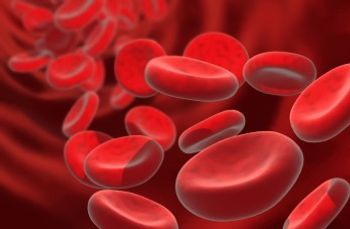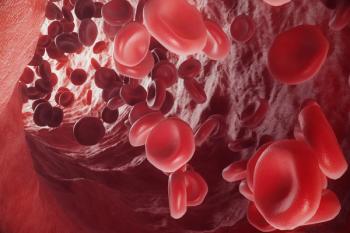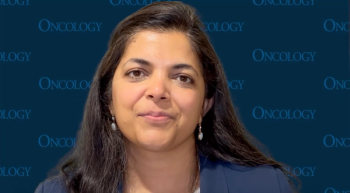
Oncology NEWS International
- Oncology NEWS International Vol 5 No 4
- Volume 5
- Issue 4
Antiangiogenesis Agents in Clinical Trials Worldwide
PARIS--Worldwide, some 50 clinical trials involving up to 1,000 patients are now attempting to define the clinical utility of angiogenesis inhibitors in reining in micrometastases. The rationale for such "dormancy therapy" lies in a hypothesis formulated by Judah Folkman, MD, of Harvard.
PARIS--Worldwide, some 50 clinical trials involving up to 1,000patients are now attempting to define the clinical utility ofangiogenesis inhibitors in reining in micrometastases. The rationalefor such "dormancy therapy" lies in a hypothesis formulatedby Judah Folkman, MD, of Harvard.
If tumor size is ultimately controlled by endothelial proliferation,a primary tumor might suppress the growth of distant metastasesby delivering an endothelial inhibitor to the metastases throughthe circulation. This hypothesis could account for the explosivegrowth of metastases observed in some patients after excisionof the primary tumor.
In his acceptance of the Claude Jacquillat Award at the SixthInternational Congress on Anti-Cancer Treatment (ICACT), Dr. Folkmandescribed the laboratory studies of tumor angio-genesis that havesince given rise to a new perspective in oncology.
Initially, Dr. Michael O'Reilly, working in Dr. Folkman's laboratory,observed in an animal model that removal of a primary Lewis lungtumor led to the rapid growth of metastases.
Dr. O'Reilly and his colleagues further found that the primarytumor produced a specific endothelial inhibitor that circulatedfor 2½ days.
This 38-kd protein, now known as angiostatin, proved capable ofinhibiting capillary and aortic endothelial cells while havingno effect on carcinoma cells, fibroblasts, or smooth muscle cells.
"Most human tumors are angiogenic," Dr. Folkman said,"but some release an inhibitor of endothelial growth thatcan go to a remote site and some don't."
A crucial finding in these studies was that, after removal ofthe primary tumor, injections of angiostatin were able to checkthe growth of metastases, leaving them as small dormant micrometastasesin steady-state.
Moreover, Dr. Folkman noted, daily treatment with an angiogenesisinhibitor was shown to retard the growth of an already vascularizedprimary Lewis lung tumor by as much as 87%.
Human tumors of the breast, prostate, and colon are even easierto treat, he maintained, because they are less angiogenic.
There may be an advantage in combining angiogenesis inhibitionwith cytotoxic chemotherapy, since these new agents also boostthe rate of programmed cell death, while exerting no impact onthe rate of cell proliferation. Thus, Dr. Folkman said, the dormantmicrometas-tases are rendered exquisitely sensitive to chemotherapy.
Dr. Folkman cited work by Dr. Beverly Teicher, of the Dana-FarberCancer Institute, showing that "if you give an angiogenesisinhibitor or your best chemotherapy, you cannot cure a mouse Lewislung tumor, but if you give both together you can cure 42% ofsuch tumors permanently."
Dr. Yihai Cao in the Folkman laboratory has shown that fibrosarcomacells transfected with the gene for angiostatin will release angiostatinand maintain their own suppression of vessel growth. Even afterthe primary tumor is excised, the metastases that have the genefor angio-statin remain dormant and will not grow, Dr. Folkmansaid.
Two-Compartment Tumor System
Dr. Folkman stressed the importance of thinking of tumors as atwo-compartment system, consisting of tumor cells and endothelialcells living together in a very defined ecosystem.
The tumor cell compartment of the system produces substances thatpromote and suppress angiogenesis, he said, while the endothelialcell compartment not only delivers nutrients to the tumor cellsbut also produces growth factors and cytokines that can stimulatethe growth of the tumor cells and enhance their motility.
"We in the medical community have been treating the tumorcell compartment since 1948," he said, "but one problemis that tumor cells mutate and become resistant, whereas endothelialcells do not."
Angiogenesis and the Four Patterns of Metastasis
Dr. Judah Folkman in his talk before the ICACT (see story above),said that the discovery of angiostatin and three other tumor-derivedendothelial inhibitors may help to explain the four common patternsof tumor metastasis observed in clinical practice.
Dr. Michael O'Reilly in Dr. Folkman's laboratory can make animalmodels "so that we can attempt a unified hypothesis,"he said.
Articles in this issue
over 29 years ago
Breast Cancer Stamp Debuts in Juneover 29 years ago
NCI, Department of Defense Sign Clinical Trials Agreementover 29 years ago
NCI to Fund More Extramural Investigationsover 29 years ago
Lymphoma, Leukemia Patients Sought for Trial of MoAbover 29 years ago
'Integrated Symposia' New Feature at ASCO Conferenceover 29 years ago
Obstacles That Slow Guidelines Implementationover 29 years ago
Lynch Receives Bristol-Myers Squibb AwardNewsletter
Stay up to date on recent advances in the multidisciplinary approach to cancer.


















































































